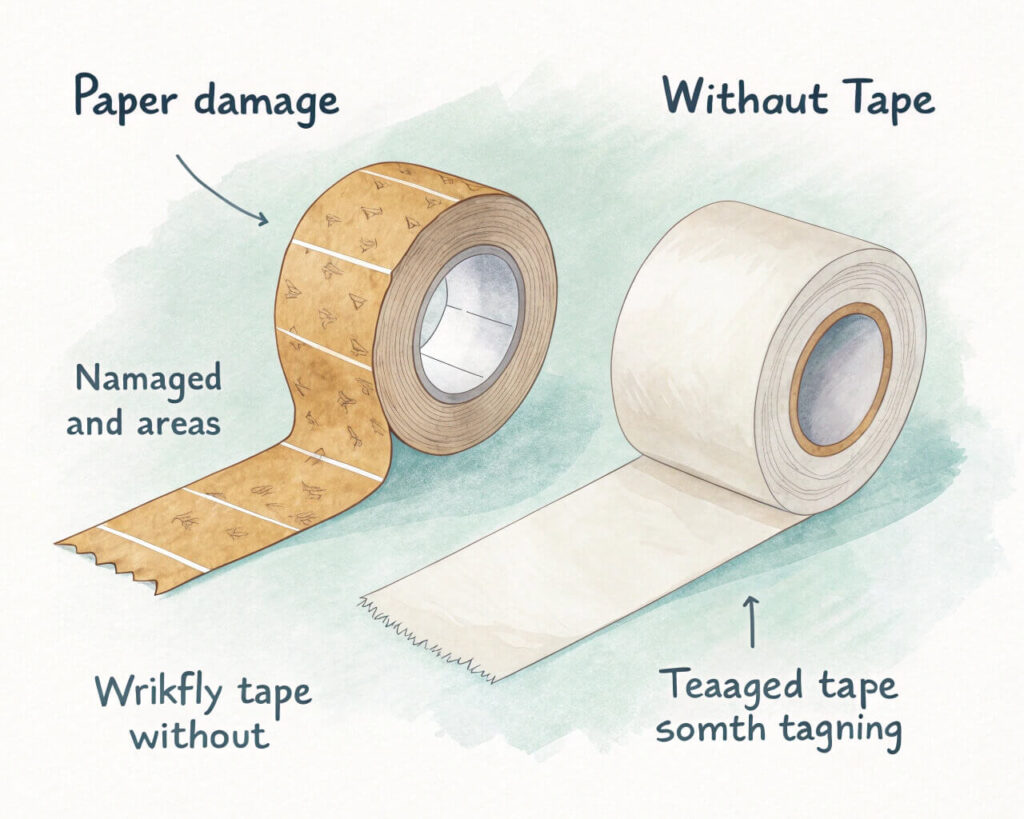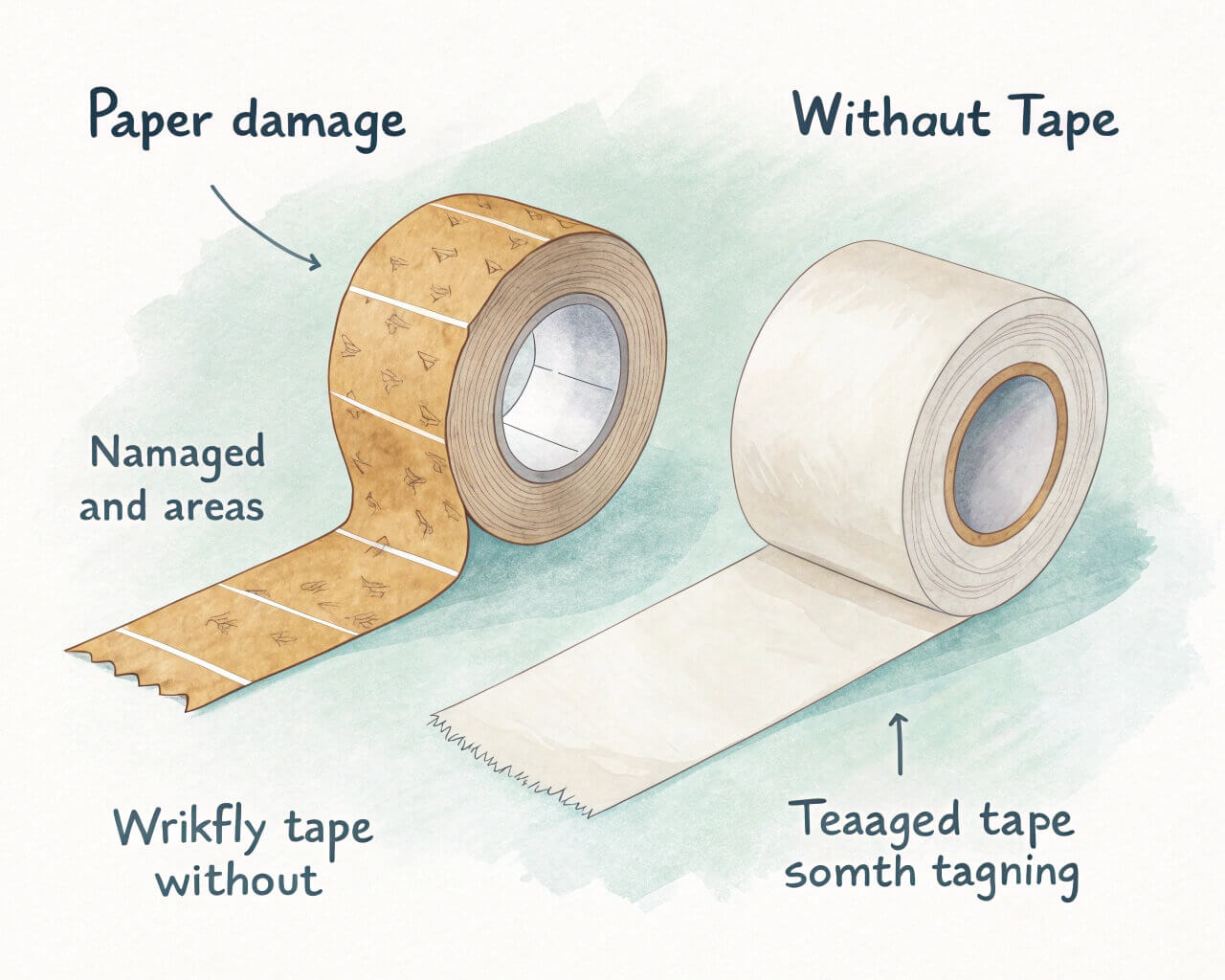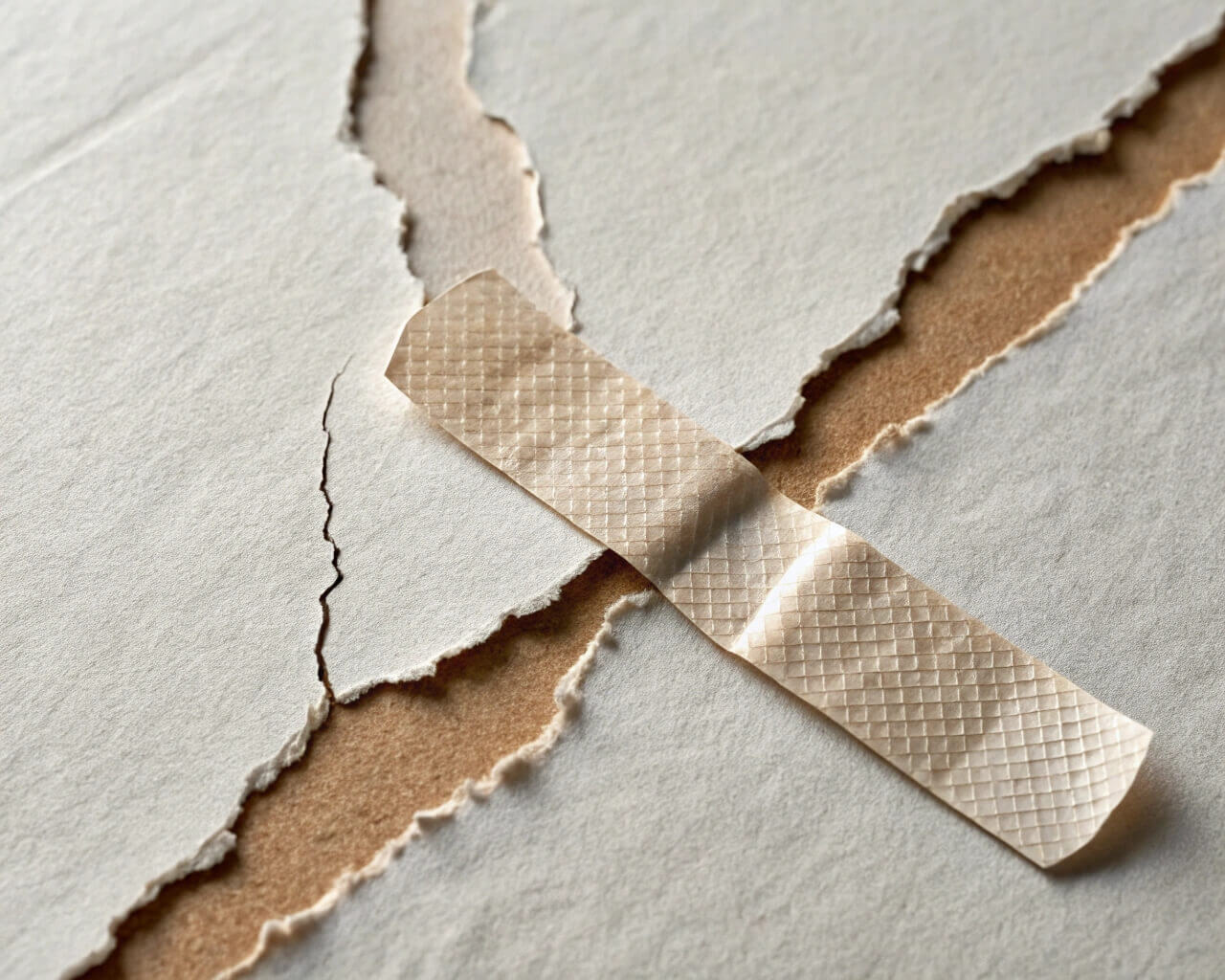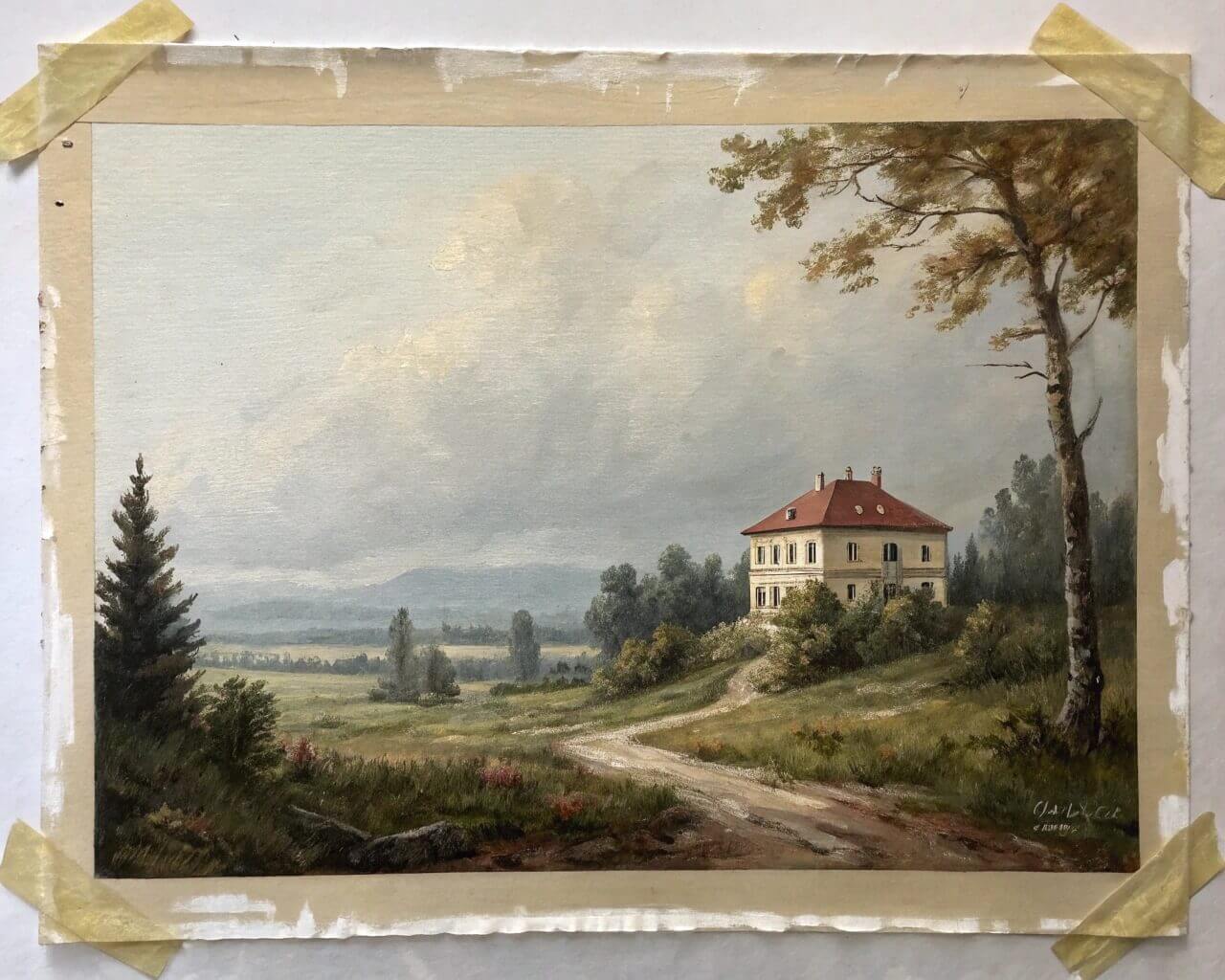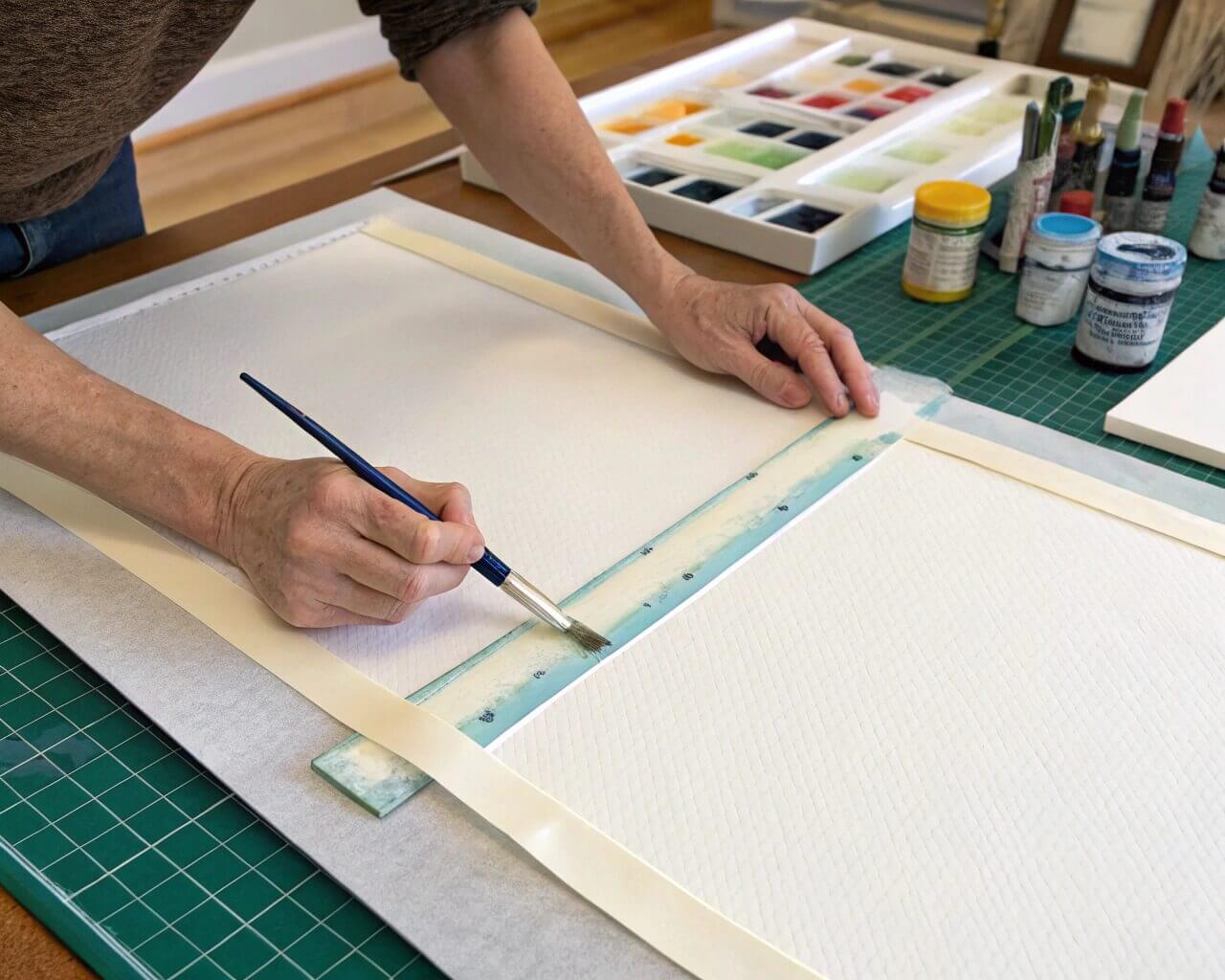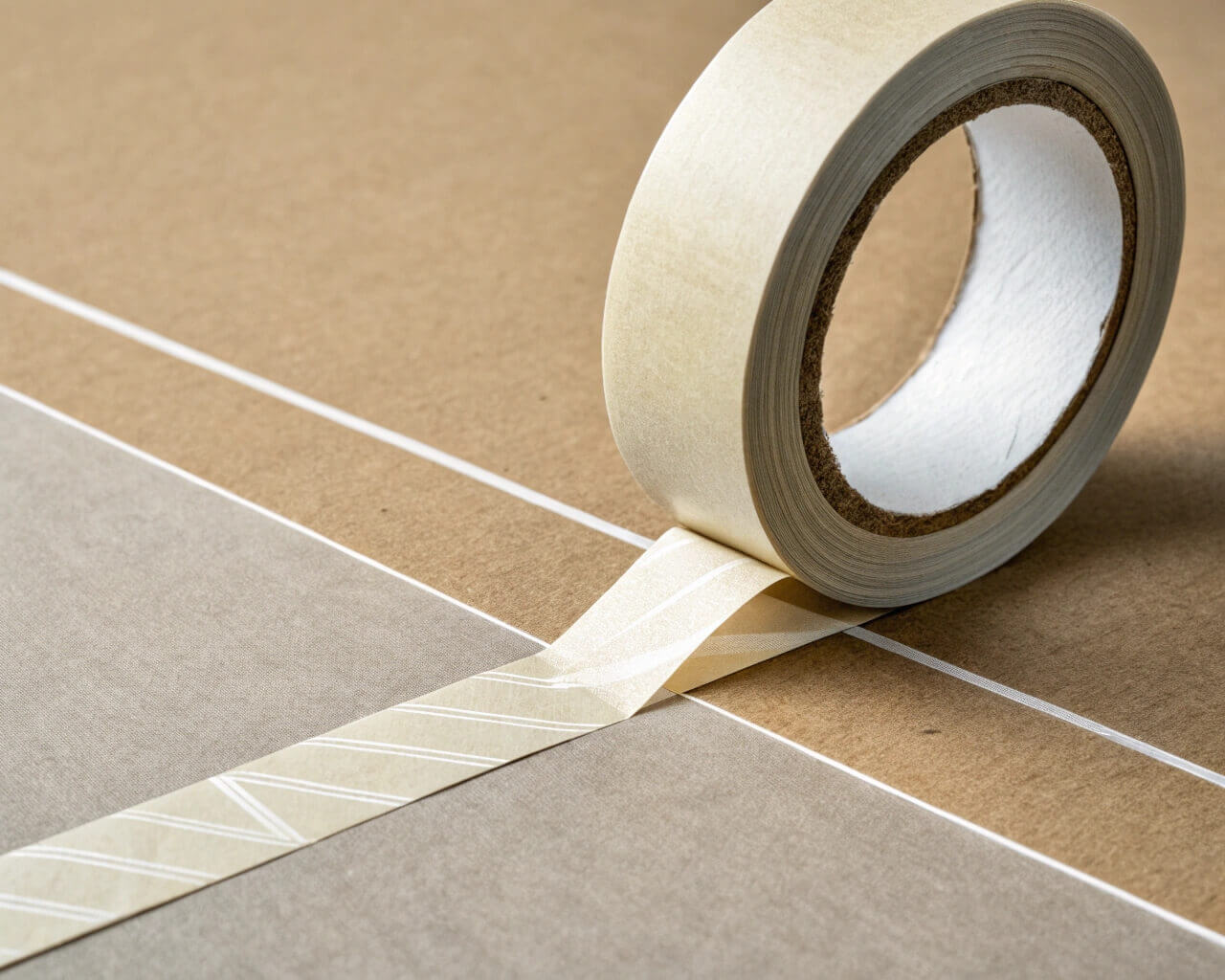Have watercolor paintings cracked from tape damage? This common nightmare destroys hours of work. Here’s how the right tape protects your paper instantly.
Artist tape prevents watercolor paper tearing better than masking tape. Masking tape has strong adhesive that rips paper fibers when removed. Artist tape offers residue-free release and mild adhesion specifically engineered for delicate art surfaces.
Understanding tape types matters to keep paper intact. Let’s uncover specific risks and solutions for watercolor artists. We’ll start with masking tape hazards.
Does masking tape ruin watercolor paper?
Paper rips mid-peel? Aggressive adhesives cause irreparable tears. Avoid heartbreak with gentler solutions.
Masking tape often damages watercolor paper because its strong adhesive penetrates fibers. Removal pulls surface layers away, creating tears or residue. Artist tape’s controlled adhesion prevents this.
Why adhesives matter
Watercolor paper fibers are delicate. Masking tape bonds tightly to them using rubber-based glue. During removal, the force required exceeds the paper’s structural strength. Result? Surface ripping or “delamination” where layers separate.
Residue complications
Residual glue attracts dust and pigments. It creates sticky patches that ruin new paint layers. Reusing taped areas becomes impossible. Artist tape avoids this with low-tack adhesive engineered for porous surfaces.
Comparing tape impact
| Issue | Masking Tape Risk | Artist Tape Solution |
|---|---|---|
| Surface tearing | High (pulls paper fibers) | None (clean release) |
| Residue | Common (interferes with paint) | Rare |
| Reusability | Damaged surface can’t be retaped | Safe for multiple uses |
Choose wisely. A $2 tape can destroy valuable artwork.
Can I use masking tape instead of artist tape?
Urgent deadlines tempt cheap substitutions. Regret follows ruined textures. Never compromise on essentials.
No, masking tape shouldn’t replace artist tape for watercolor. Its adhesive strength damages paper and causes paint bleed. Artist tape offers precision sealing designed for art.
Adhesive design differences
Artist tape uses pressure-sensitive adhesive that bonds temporarily. Masking tape employs stronger rubber cement that cures over time. Longer application worsens its grip, guaranteeing paper damage upon removal.
Bleed prevention capabilities
Masking tape’s crepe paper backing wrinkles when damp. Watercolor seeps under edges, blurring lines. Artist tape has synthetic coatings that repel moisture. Its flat seal prevents bleed for sharp boundaries.
Cost versus risk analysis
| Factor | Masking Tape | Artist Tape | Outcome |
|---|---|---|---|
| Initial price | Lower ($1/roll) | Higher ($4/roll) | Short-term savings |
| Repair cost | High (paper replacement) | None | Long-term expense |
| Project success | Uncertain | Guaranteed | Choose reliability |
Using masking tape often costs more in ruined supplies. Invest correctly.
How to tape watercolor paper to prevent buckling?
Buckling paper creates puddles and smears. Support paper correctly for smooth washes.
Tape all edges while paper is damp-stretched. Pull moderately to create tension. Let it dry before painting. This counteracts moisture expansion.
Wet-stretching essentials
Soak paper for 5 minutes until pliable. Lay flat on a board. Tape edges while lifting slightly. The drying contraction eliminates buckling later.
Pressure and placement
Apply tapes with consistent pressure. Overstretching causes tears. Gaps encourage seepage. Press edges firmly every inch for uniform contact.
Correct tools checklist
- Sturdy board (wood/cork)
- 1.5-inch artist tape
- Clean sponge for wetting
- Heavy book for corner weighing
- Drying time: Minimum 6 hours
Proper tension locks fibers in place. Buckling happens without it.
How to prevent painters tape from ripping paint?
Peeling pulls up dried colors? Fresh or thin paint layers need special handling. Protect your artwork.
Remove tape at 45° angle when paint is touch-dry. Press edges down pre-peeling to weaken adhesion. Avoid water-based layers under tape seals.
Paint layer vulnerability
New acrylics lift easily—they bond poorly to surfaces. Thin washes offer weak protection. Tape adhesion bypasses fragile layers. Avoid taping wet coats or dilute pigments.
Removal timing tactics
Remove within 48 hours maximum. As paint cures, it grips tape backing. Test small sections first. Never pull tape toward painted areas—direct angle away.
Safe practice table
| Risk | Prevention Tip | Why It Works |
|---|---|---|
| Lifting thick paint | Seal edges with matte medium | Creates protective barrier |
| Residue transfer | Warm tape gently with dryer (low heat) | Softens adhesive |
| Edge damage | Cut tape with knife instead of peeling | Mechanical separation |
Patient technique preserves brushwork forever.
Choose proper tape to protect your art and time. Small investment prevents big losses.

